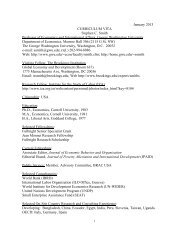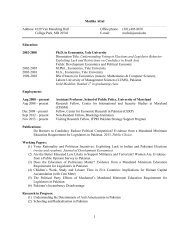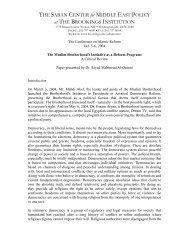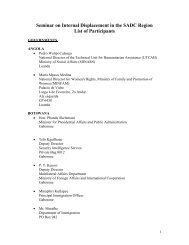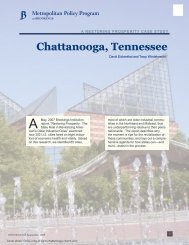Guide to International Human Rights Mechanisms - Brookings
Guide to International Human Rights Mechanisms - Brookings
Guide to International Human Rights Mechanisms - Brookings
You also want an ePaper? Increase the reach of your titles
YUMPU automatically turns print PDFs into web optimized ePapers that Google loves.
Go To Part I II III IV V<br />
Protection During Displacement<br />
ARBITRARy.KILLINGS.<br />
IDPs have the right <strong>to</strong> life and must therefore be protected against murder, summary executions,<br />
and genocide (Guiding Principle 10), in other words, against arbitrary killings. Not all killing is<br />
forbidden (or “arbitrary”) pursuant <strong>to</strong> human rights law; for instance, as a last resort, police may<br />
kill a person <strong>to</strong> prevent him causing imminent injury or death <strong>to</strong> others. Similarly, soldiers may<br />
kill armed enemy combatants in times of armed conflict. However, these exceptions <strong>to</strong> the general<br />
prohibition of killing are narrow.<br />
In situations of armed conflict, both parties must try <strong>to</strong> avoid actions that may lead <strong>to</strong> the killing<br />
of civilians. In particular, IDPs may not be taken hostage or otherwise used as “human shields” in<br />
conflict and must be protected against the use of anti-personnel landmines.<br />
Arbitrary killings or threatened killings of IDPs may generally be brought <strong>to</strong> the attention of:<br />
at the universal level<br />
• Special Rapporteur on Extrajudicial, Arbitrary or Summary Executions (page 81)<br />
• <strong>Human</strong> <strong>Rights</strong> Committee (page 120), citing CCPR art. 6<br />
• Special Advisor of the Secretary-General on the Prevention of Genocide (page 116)<br />
at the regional level<br />
Thematic Roadmap<br />
• Inter-American Commission (and Court) on <strong>Human</strong> <strong>Rights</strong> (page 171), citing ACHR art. 4<br />
and/or ADRDM art. 1<br />
• African Commission (and Court) on <strong>Human</strong> and Peoples’ <strong>Rights</strong> (page 156), citing AfCHPR<br />
art. 4<br />
• European Court of <strong>Human</strong> <strong>Rights</strong> (page 195), citing ECHR art. 2<br />
For mass killings, see the section on Large-Scale Violations of <strong>Human</strong> <strong>Rights</strong> (page 25). Where<br />
mercenaries are responsible for the killings, the new Working Group on the Use of Mercenaries as<br />
a Means of Impeding the Exercise of the Right of People <strong>to</strong> Self Determination (page 110) may<br />
be interested.<br />
When killings may amount <strong>to</strong> genocide, crimes against humanity or, if in the context of armed<br />
conflict, war crimes, it may be advisable <strong>to</strong> involve the <strong>International</strong> Criminal Court (page 144).<br />
The <strong>International</strong> Committee of the Red Cross might also be able <strong>to</strong> intervene for arbitrary killings<br />
in situations of armed conflict (page 142).<br />
For killings or threatened killings of women, children, indigenous peoples, minorities and human<br />
rights defenders, the mechanisms listed in the section on Particular Groups of People (page 22)<br />
<strong>Guide</strong> <strong>to</strong> <strong>International</strong> <strong>Human</strong> <strong>Rights</strong> <strong>Mechanisms</strong><br />
for Internally Displaced Persons and their Advocates<br />
0




